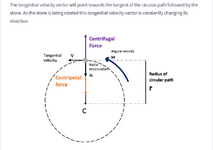Hello, this is the second question in a short time, but hopefully it will be the last one.
My doubt is related to centrifugal pumps. According to my notes, in a centrifugal pump static pressure rises both in the impeller and in the volute, however, searching on the internet it seems that static pressure only increase in the volute by converting kinetic energy into pressure energy. By analyzing the problem I came to the conclusion that maybe in the impeller both kinetic and pressure energy increase and than further kinetic energy is obtained by slowing down the fluid in the volute, is it correct? In this case, where does pressure energy in the impeller come from? Is it developed by the force exerted by the blades on the fluid?
My doubt is related to centrifugal pumps. According to my notes, in a centrifugal pump static pressure rises both in the impeller and in the volute, however, searching on the internet it seems that static pressure only increase in the volute by converting kinetic energy into pressure energy. By analyzing the problem I came to the conclusion that maybe in the impeller both kinetic and pressure energy increase and than further kinetic energy is obtained by slowing down the fluid in the volute, is it correct? In this case, where does pressure energy in the impeller come from? Is it developed by the force exerted by the blades on the fluid?


